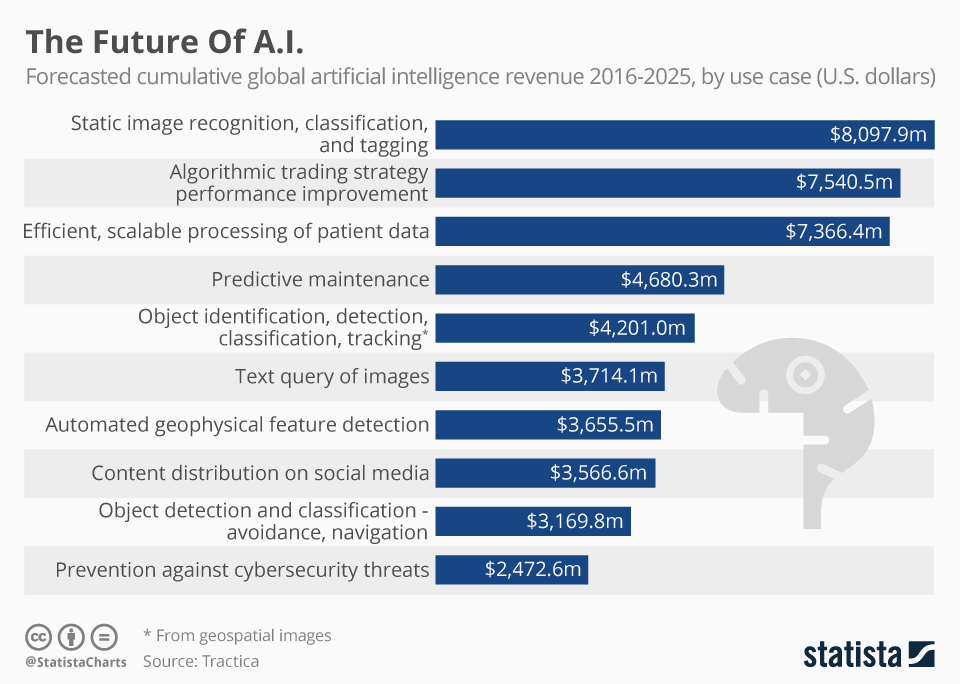Understanding Data Science: the basis of a successful AI and Machine Learning strategy
Written by
Editorial TeamPublished on

Photo credits to news-medical.net
Two words create lots of puzzles right now, and they are no other than Artificial Intelligence (AI) and Machine Learning (ML). These two buzzwords always come to mind whenever topics such as Data Science, Big Data and other broader technological terms that are making a wave globally, come up.
Even though artificial intelligence and machine learning are creating a scene in our world today, it does not guarantee that we know everything about them. What are the differences between machine learning and artificial intelligence?
Knowing the key differences is paramount especially if you wish to apply any one of them in your business. ML is different from AI even if they initially might sound related. They cannot be applied to the same tasks. Here is the perfect way to differentiate them.
ARTIFICIAL INTELLIGENCE
In a broader sense, describes the ability of a machine to be able to perform tasks that usually require human intelligence.
MACHINE LEARNING
This is an application of AI, and it is based on the premise that enough data should be provided to machines, so they could use it to improve their performance.
What about the potential of these technologies?

As we can see from the data the future is certainly here. But we have to admit that sometimes changes can be unpredictable like in the case of Zalando that in this year cut up to 250 of its marketing positions. Everything due to the rise of marketing machines.
How can we benefit from these technologies? Can it be useful for e-commerce?
Of course!
To a large extent, e-commerce websites employ data mining and analytics strategies to target potential customers with different cross-sells and upsells techniques. It is therefore pertinent to note that Amazon is one of the pioneers of data mining with regards to e-commerce. Amazon uses sophisticated data mining techniques to improve their marketing functions. The feature in Amazon that says “people who viewed this product also like,” is brought about by data mining technology and powered by a machine learning algorithm.
Another example of an e-commerce giant that’s using AI to step up their game and understand consumers better is The North Face. They use IBM’s AI solution known as Watson to enable online shoppers to discover their perfect jacket. To achieve this, they ask the customer several questions such as “where and when will you be using your jacket?” with the help of a voice input AI technology. The software then scans through hundreds of products available to pick the perfect match based on real-time customer input and research which could be the type of weather condition prevalent in the local area.
How Germany’s Otto uses artificial intelligence
We can understand the big picture of retailing when we analyze Otto, a German e-commerce merchant that uses AI to improve its performance. The company went to the far extent of deploying AI technology to make fast and strategic decisions that surpass the capabilities of its human employees.

Otto AI
With the AI technology, future monthly sales can be predicted with 90% accuracy. This allows Otto to automatically purchase about 200,000 items monthly from third-party brands without any human intervention. It is practically impossible for a human to scrutinize the various products, colors, and sizes that the machine orders. According to Nathan Benaich (an investor in AI), machine learning technology can perform at its best when it comes to online retailing.
How can e-commerce make use of it?
There are just a few suggestions:
- Create customer-centric search
- Identify high-priority sales prospects
- Retarget potential customers
- Create a more efficient sales funnel
- Empower store workers
- Provide a personal touch with chatbots
- Implement virtual assistants
- Enable major household items integration
- Create a new level of personalization across multiple devices
- Improved customer service
- Network with intelligent agents
- The introduction of personal virtual shoppers
- Build a tool that aids ‘assortment intelligence’
- Generate sales with the use of wearable technology
- Bridge the gap between privacy and personalization
- Work on dialogue systems
- Tackle fake reviews
- Localise the customer experience
- Tackle counterfeit products
Amazing changes coming soon
Germany is considered a giant in the production of several goods such as cars, chemicals, and heavy equipment. Despite this, they struggled to scale their efforts just like other nations for many years. But gladly, change is coming now.
Irrespective of the slow adoptive process, one thing is sure, Germany stands to gain a lot from advanced data analytics, data science, machine learning and artificial intelligence; especially its industrial sector.
As one of the countries that adopted AI early enough, Germany can even exceed its target 2030 GDP by 4%. On a second thought, if AI is adopted more slowly and there is no significant increase in productivity, it could lag in its GDP target by up to one-third.
It is estimated that the e-commerce industry stands to gain a lot from AI technology in the coming years. It will mark the beginning of a change and improve the way consumers search for products online. Tools like BlazeSQL help teams explore and query their data without relying on engineers, making it easier for marketers and product teams to uncover insights and validate decisions faster.
Even though different sectors of the economy are adapting to technological advancement in various levels, it is sure that the greatest change is yet to come.
BONUS
EBE2018 – Fundamental eCommerce A.I. in FurnTech (Moebel24, Miro Morczinek)
EBE2018 – Boost your sales using machine learning and data-driven reasoning (Unity Group)
- which ML/AI algorithms are best suited for data analysis for online sales
- tools to use for data visualization
- what is the potential of data-driven reasoning
- examples from existing projects


